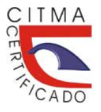Morphology and germination of Euphorbia heterophylla L. seeds
Keywords:
Embryo, Endosperm, Germination, ViabilityAbstract
Knowledge of the morphophysiological characteristics of fruits and seeds is important to study the reproductive form and the possibility of domesticating a native species of agricultural or pharmaceutical interest. The purpose of this study was to determine the morphological characteristics and germination capacity of Euphorbia heterophylla L. seeds, due to its agricultural and economic importance. Morphological analyzes were carried out with 20 fruits and 50 seeds recently harvested and randomly selected. The morphological characteristics of the embryo were determined, as well as its development. Additionally, the physiological characteristics of the seeds were studied through moisture content, viability and germination at different photoperiods. The mature fruit of E. heterophylla is a three-lobed capsule with an average of 3 seeds per fruit. The seeds are conical with a wide base, carunculate and dark brown in color. The embryo is spatulate, with a well-defined hypocotyl-radicle axis and spatula-shaped cotyledons. The moisture content at harvest time was 9.846 %, the viability was 75.83 % and the germination percentage was 55 % in the presence of light. The fruits, seeds and embryos of E. heterophylla have representative characteristics of the genus Euphorbia. Our results suggest that the seeds germinate in a higher percentage in the presence of light, without observing dormancy. This study is a starting point to outline future strategies in relation to the domestication of this species, given the agricultural and pharmaceutical importance of the plant.
Downloads
References
AARESTRUP, J. ... [et al.] (2008). Análise da viabilidade de sementes de Euphorbia heterophylla. Planta Daninha. Vol. 26, No. 3, pp. 515-519.
BANNON, J., BAKER, J. y ROGERS, R. (1978). Germination of wild poinsettia (Euphorbia heterophylla). Weed Science. Vol. 26, No. 3, pp. 221-225.
BASKIN, C. C. y BASKIN, J. M. (2014). Seeds: ecology, biogeography, and evolution of dormancy and germination. San Diego, CA, Academic Press. 2nd ed., 1586 p.
BINDELLE, J. ... [et al.] (2007). Voluntary intake, chemical composition and in vitro digestibility of fresh forages fed to Guinea pigs in periurban rearing systems of Kinshasa (Democratic Republic of Congo). Tropical Animal Health and Production. Vol. 39, No. 1, pp. 419-426.
BOLAJI, A. O. ... [et al.] (2014). Morphological and cytological studies of Euphorbia hyssopifolia L. and Euphorbia heterophylla L. from Ile-Ife, Nigeria. Nigerian Journal of Genetics. Vol. 28, No. 2, pp. 15-18. 10.1016/j.nigjg.2015.06.003.
BRECKE, B. J. (1995). Wild poinsettia (Euphorbia heterophylla) germination and emergence. Weed Science. Vol. 43, No. 1, pp. 103-106.
CORNER, E. J. H. y CORNER, E. J. H. (1976). The Seeds of Dicotyledons: Volume 1, Cambridge University Press.
DA SILVA, O. L. M., CORDEIRO, I. y CARUZO, M. B. R. (2015). Seed morphology in Euphorbia and its taxonomic applications: a case study in São Paulo, Brazil. Brazilian Journal of Botany. Vol. 39, No. 1, pp. 349-358. 10.1007/s40415-015-0228-9.
ELLIS, R. H., ...[et al.]. (2018). Medium-term seed storage of 50 genera of forage legumes and evidence-based genebank monitoring intervals. Gen. Res. and Crop. Evol. Vol. 65, No. 2, pp. 607-623. doi: 10.1007/s10722-017-0558-5.
FALODUN, A., AGBAKWURU, E. y UKOH, G. (2003). Antibacterial activity of Euphorbia heterophylla Linn. (Family-Euphorbiaceae). Biological Sciences-PJSIR. Vol. 46, No. 6, pp. 471-472.
FREIRE, J., ...[et al.]. (2021). Drying and storage of Melanoxylon brauna Schott. seeds. Braz. Jour. of Biol. Vol. 81, No. 2, pp. 464-473. doi: 10.1590/1519-6984.232578.
GAGLIARDI, K. B. ... [et al.] (2012). Structure and development of fruits and seeds of weed species of Euphorbiaceae. Acta Botanica Brasilica. Vol. 26, No. 1, pp. 38-45.
GRONGNET, J.F. ... [et al.] (2013). Effect of a supplementation of Euphorbia heterophylla on nutritional meat quality of Guinea pig (Cavia porcellus L.). Meat science. Vol. 93, No. 4, pp. 821-826.
GUTIÉRREZ, A., PERNÚS, M. y SÁNCHEZ, J. A. (2020). Rasgos funcionales de semillas de Calycophyllum candidissimum (Rubiaceae), árbol pionero del Neotrópico. Rev. Jar. Bot. Nac. Vol. 41, No. 1, pp. 71-77.
HUAMANÍ, G. ... [et al.] (2016). Efecto de tres sistemas de alimentación sobre el comportamiento productivo y perfil de ácidos grasos de carcasa de cuyes (Cavia porcellus). Revista de Investigaciones Veterinarias del Perú. Vol. 27, No. 3, pp. 486-494.
ISTA. (2016). International rules for seed testing. I. S. T. Association. Bassersdorf, Suiza, 192 p.
KOUAKOU, N. ... [et al.] (2010). Ingestion et digestibilité in vivo du Panicum maximum associé à trois compléments: tourteau de Jatropha curcas, tourteau de coton (Gossypium hirsutum) et Euphorbia heterophylla chez le cobaye (Cavia porcellus L.). Tropicultura. Vol. 28, No. 3, pp. 173-177.
MALDONADO-PERALTA, M. A. ... [et al.] (2016). Seed viability and vigour of two nanche species (Malpighia mexicana and Byrsonima crassifolia). Seed Sci. Tech. Vol. 44, No. 1. pp. 168-176. doi: 10.15258/sst.2016.44.1.03.
MARTIN, A. C. (1946). The comparative internal morphology of seeds. The Ame. Mid. Nat. Vol. 36, No. 3, pp. 513-660. doi: 10.2307/2421457.
RODRIGUEZ, E., TOWERS, G. y MITCHELL, J. (1976). Biological activities of sesquiterpene lactones. Phytochemistry. Vol. 15. No. 11, pp. 1573-1580.
ROWAN, N. y ONWUKAEME, D. (2001). Deterpnoid esters of Euphorbiaceae in Euphorbia hyles. Nig. J. Pharmacol. Vol. 32, No. 1, pp. 60-64.
SUDA, C. N. y GIORGINI, J. F. (2000). Seed reserve composition and mobilization during germination and initial seedling development of Euphorbia heterophylla. Revista Brasileira de Fisiologia Vegetal. Vol. 12, No. 2, pp. 226-245.
TOKUOKA, T. y TOBE, H. (2002). Ovules and seeds in Euphorbioideae (Euphorbiaceae): structure and systematic implications. Journal of Plant Research. Vol. 115, No. 1. pp. 361-374.
VIVAS, J. (2018). Especies exóticas invasoras Lantana cámara y Euphorbia heterophylla: implicaciones para espacios protegidos de Ecuador. Master. Quevedo: UTEQ.
WILSON, A. (1981). Euphorbia heterophylla: a review of distribution, importance and control. International Journal of Pest Management. Vol. 27, No. 1, pp. 32-38.
WILLIAMS, C.A. ... [et al.] (1995). A biologically active lipophilic flavonol from Tanacetum parthenium. Phytochemistry. Vol. 38, No. 1, pp. 267-270.
Downloads
Published
Versions
- 2024-03-07 (3)
- 2023-05-25 (2)
- 2023-05-25 (1)
How to Cite
Issue
Section
License
Copyright (c) 2023 Universidad & ciencia

This work is licensed under a Creative Commons Attribution-NonCommercial-ShareAlike 4.0 International License.





















